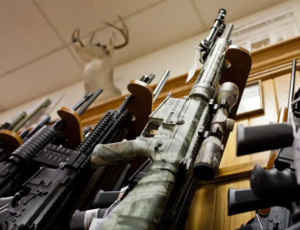With canceled subway trips piling up amid a shortage of train operators and conductors, transit union leaders are pushing the MTA to speed up training of new hires without sacrificing safety.
MTA officials this week acknowledged that riders will likely continue to feel the effects “for some time” of a hiring freeze and rush of retirements that have thinned the ranks of subway workers and extended wait times on steamy platforms.
Transport Workers Union Local 100 is talking with the MTA about the possibility of trimming some time off the up to eight months of training currently required of new train operators.
“We are all in favor of intensive and comprehensive qualifications for our train operators,” Eric Loegel, a union vice president who represents train operators and conductors, told THE CITY. “With that said, there is a part of the training curriculum that we could probably do without.”
Specifically, the union wants the MTA to look at the two to three months that trainees spend moving out-of-service trains in subway yards and terminals.
Known as “yard extra,” the training exercise is sandwiched between months of classroom instruction and shadowing veteran train operators on the job.
Loegel said the time in yards is “outsized” in importance relative to other forms of instruction for new train operators.
“Safety is always our foremost concern, but I don’t think eliminating or reducing the time spent in the yard extra program would compromise safety,” Loegel said. “If anything, those two to three months could be replaced with a few additional weeks of yard or road ‘posting,’ which provides a more direct instruction to the new employee.”
Cancelations Running High
The union’s push comes as commuters have been hit hard by a surge in canceled trips. THE CITY reported earlier this month that more than 10,000 subway trips were scratched in June because of crew shortages — more than double the number of canceled trips in January.
New MTA documents from a Monday board meeting show that, in June, 7,591 employees were working in subway service delivery, a 15% reduction from November 2017.
Sarah Peltz, 42, of Brooklyn, said she has repeatedly run into delays recently on the F and R lines because of a shortage of train crews.
“I get up at 5:30 to catch a train before 7 because I assume there will always be an issue,” Peltz said. “So I give myself a window.”
MTA officials blame the staffing shortfalls on a hiring freeze put in place at the start of the pandemic, when ridership sunk alongside the agency’s finances.
“We knew going into the hiring freeze that it would be difficult to dig out of, that we would need to be aggressive about how we were thinking about bringing on additional workers and how we were training them, ” Sarah Feinberg, the interim president of New York City Transit, said at Wednesday’s MTA board meeting.
Feinberg said the MTA is trying to maximize class sizes while “not cutting any corners on safety,” but acknowledged the agency is having more trouble recruiting employees than prior to the pandemic.
“As we go through the list and invite people to join a class of bus operators or train operators or conductors, we are not hitting the same numbers that we have in the past,” she said.
Chris Van Eyken of TransitCenter, a research and advocacy organization, noted that transit agencies globally are struggling with worker shortages.
“I don’t know if anyone has quite figured it out yet,” he said. “Recruitment, hiring and training haven’t been able to keep up with the pace of retirements. This began pre-pandemic and has grown more urgent over the last year.”
Express Training
A demand for workers has not translated to changes in training time for train operators at several other major subway systems around the country — some of which don’t take even half the time as New York does to get new hires on track.
Train operators on the T in Boston still receive seven weeks in training before moving on to approximately seven months of moving empty trains in yards and in and out of maintenance facilities, according to a spokesperson for the Massachusetts Bay Transportation Authority.
A spokesperson for the Chicago Transit Authority said initial training for rail operators ranges from 43 to 51 days and that the CTA is not looking to shorten training time.
On the London Underground, the training program for new Tube drivers lasts from 12 to 15 weeks, a Transport for London spokesperson said, with the amount of time depending on which line they will be working.
In 2018, the TWU called for a “top-to-bottom review” of training requirements for subway operators after a group of veterans complained that trainees were being rushed into passenger service.
Multiple transit sources pointed to the tightened training of the so-called “Microwave Motormen,” who were pressed into service a generation ago with 90 days of instruction because of a rush of retirements.
“Take the time to train workers properly and let management take the blame for the personnel screwup,” one source said.
The TWU’s Loegel said that new train operators would be better served by spending more time alongside veterans on trains in passenger service and said the lack of hiring during the pandemic will affect riders and workers well beyond Labor Day, when a wave of New Yorkers is expected to return to the workplace.
“We welcome new hires,” he said. “But because it takes so long to train them, we’re probably looking at early next year before their impact is really felt.”
This article was originally posted on Subway Watchers Say MTA Could Plug Staff Holes by Losing Training Wheels Faster






Be First to Comment